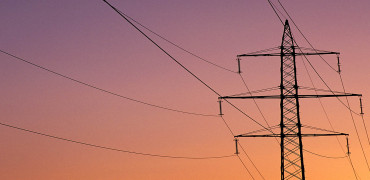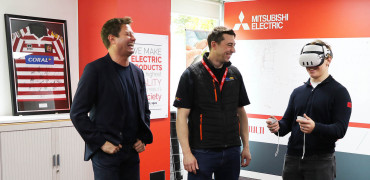The new Labour government has very ambitious building plans and is prioritising the delivery of housing.
They are proposing that 1.5 million homes be constructed over the next parliament, which is fantastic for the house building industry and it should be good for the country too, as long as the houses that are built are of outstanding quality and are affordable for those currently suffering under the dark cloud of Britain’s ever-worsening housing crisis.
It can’t just be about now many homes we build, it is about building the right homes in the right places, at the highest standard for the areas that need those homes most.
One of the government’s manifesto pledges to help accelerate the delivery of more homes is to create a series of New Towns across the UK. Their manifesto promised “a new generation of new towns, inspired by the proud legacy of the 1945 Labour government”.
It isn’t just about the number of homes built, it’s the fact that it was the most brilliant design
My own new town
I’m a new town boy. I was raised in an innovative New Town in the Northeast of England called Washington (it is the ancestral home of the Washington family, from which the first President of the United States, George Washington, descended) situated between Sunderland and Newcastle.
It was an incredible place to live. Some of the very best architects, designers, master planners, landscape architects, highway designers and social and economic thinkers from the UK and across Europe were brought together to deliver, not only a town of the future, but one that would create long-lasting communities.
It was genuinely amazing. It still is today. A new town is a far more complex proposition than just building housing estates on the edges of existing towns and villages.
A new town isn’t just about building homes. It is about building absolutely everything!
I’m still in awe of all the people involved in the 1960’s and 70’s who made my new town happen.
Just think about it. They had to purchase the land, they had to navigate planning, then they had to build roads, drainage networks, power networks, gas networks, a shopping centre, local shops, health centres, doctor’s surgeries, dental practices, industrial estates, community centres, village halls, pubs, office spaces, cinemas, nurseries, primary schools, secondary schools, parks, recreation grounds, youth clubs, a wildfowl park, transportation links, a new bus station, commission public art and BMX tracks.
At the same time, they had to try to respect the local history of the old village as well as the many farms that were bought in order for the new town to be built.
And they had to make the entire development stack up financially.
Innovative and forward-thinking
In 1961, Durham County Council formed the Washington Development Corporation, which was to become a massive part of my life. Its logos, signage and vans were everywhere when I was growing up.
Washington was designated a new town in 1964 (we have just celebrated our 60th birthday this year) and it still amazes me to this day that the vast majority of everything we needed in our new town was completed within 10 years and would be able to accommodate a population of 80,000 people.
But it isn’t just about the numbers of home that were built or the fact an entire town was built in under 10 years, it is the fact that it was the most brilliant design.
It was so innovative, so forward thinking and it has stood the test of time.
It was also humane design. Most of the housing was low density with front and back gardens. There were no ‘streets in the sky’ or ugly 1960’s tower blocks. There were beautiful estates with homes wrapped around pedestrianised courtyards, where you could walk a couple of miles to school and not have to cross a road.
Where young families in house lived alongside the elderly in bungalows. The landscaping when I was a kids was beautiful and that’s when all the trees and planting was young. Go back to Washington now and it one of the most lush and green towns you will ever see because all of the trees have become strong and mature.
And the homes themselves were brilliant. Very simple, very efficient with great space planning AND they were affordable.
A different world now
The Labour government would do well to learn the lessons of past development corporations because it was incredible how they made all of this work and make it financially stack up.
But there is one thing that wasn’t really understood or discussed as much as it should have been back in the 60’s and 70’s when Washington was built. Ecological and Sustainable Design. Washington may have looked green when the trees and plants grew, but the buildings themselves were far from being green.
Unfortunately, Washington didn’t have any ecological architecture. The new homes had no insulation at all in the walls or roof, they all had single-glazed windows, they were all heated using gas or electricity and none of the electricity was generated by sustainable means.
We live in a completely different world now. The climate crisis is very real and global warming must be slowed down and reversed.
I have always said that architecture should work with nature and be in harmony with it, rather than fighting against nature.
Any proposed New Towns must be radical and pioneering. They must demonstrate the very best in design and technology. We cannot simply carry on building noddy-box housing estates that only meet the minimum building regulation standards and have very little or no infrastructure or public amenities.
Right there you have 1.5 millions net zero homes
A real opportunity
We now have the most incredible opportunity to create the most green, most sustainable and the most innovative ecological new towns the world has ever seen.
Just think about how good and how beautiful an ecological new town could look like be. Imagine what it could look like if we demonstrated the very best of our environmental design knowledge.
Find the best ecological designers on the planet that know everything about the cleanest, greenest electrical grid, the greenest roads, the greenest drainage systems, the greenest EVERYTHING and give all of those involved the very best, most innovative tools they need (reformed planning, reformed procurement, inventive financial models) to get on and build, let’s say 15 new towns, in say 15 years.
Let’s build them in strategic parts of the country to create wider economic growth and make sure that each new town has a population of say 100,000 people and guarantee that every single element used in evert part of its construction and throughout its lifespan is 100% NET ZERO CARBON;
Right there you have your 1.5 million homes – all super green homes.
And, as I’ve mentioned above its not just about building houses. Imagine what our new town super green schools, shops, community centres, doctors surgeries etc would look and feel like.
A truly positive effect
And think of the incredible positive effects all of this would have, not just on the planet, but on the thousands of people that live there.
If houses are affordable there is less financial stress. If homes are super insulated and super green then their energy bills would be minimal. That is less financial stress too.
We know that better quality super green homes, buildings and outdoor spaces will encourage better health and well-being.
A super green electrified town will have less air pollution, less noise pollution and will make us happier and healthier. We can create streets that feel like we live in a park, with safer, quieter and greener spaces for us to walk or cycle to school or work.
Bring all these amazingly positive factors together and I’m sure there will be a massive reduction in mental health issues and depression for those lucky enough to live in one of our new SUPER GREEN NEW TOWNS.
Of course, I wish we could retrofit all of our existing towns and cities to be like the super green new towns I’ve mentioned above. I’d love for all of our old buildings to be net zero carbon. But, the reality is that to retrofit all of our existing buildings up to a net zero carbon standard is unbelievably difficult, slow, complicated and very expensive.
Yes, we should be doing it, but I cannot see that happening at scale anytime soon. The absolute truth and reality is that building NEW is quicker and easier that retrofitting our old building stock, and building new allows us to pioneer the very best in ecological and environment design.
Just imagine
Imagine setting up a radical New Town Code or an Act of Parliament that insisted that every new town building had to perform way beyond the current building regulations. Where homes are so well insulated they hardly needed any heating at all. Where every home was powered by clean, green energy. Where all of our homes and buildings have air source heat pumps running on clean and green electricity to produce our hot water.
Imagine a town with full electrification, where gas was a thing of the past.
Imagine a ecological and intelligent water and drainage system where we all had high quality water in abundance and all of our rivers were clean and green too with thriving nature and biodiversity.
Harness this talent
We have some of the most intelligent and pioneering thinkers, designers, engineers, social scientists, manufacturers, ecologists, energy suppliers (I could go on and on with this list!) in the world… right here on our doorstep.
All these people have staggering amounts of knowledge in how to create the very best ecological towns. Some will at we cannot afford to do it. I don’t buy this at all. If we create intelligent economic model and a have a strategic long-term plan in place that values a new town in many ways over its entire lifespan, then of course we can afford to do it.
Our current short-term economic models are primitive and don’t address long-term value. If they could make it work in the 1960s then surely, we can make it work at a much more sustainable level 60 years later.
We now need this government to be unbelievable brave, to harness the phenomenal talent we have and set up a pioneering delivery model for us to all work together to create the very best SUPER GREEN NEW TOWNS the world has ever seen!
George Clarke is a TV presenter, architect, writer and Ecodan Ambassador




